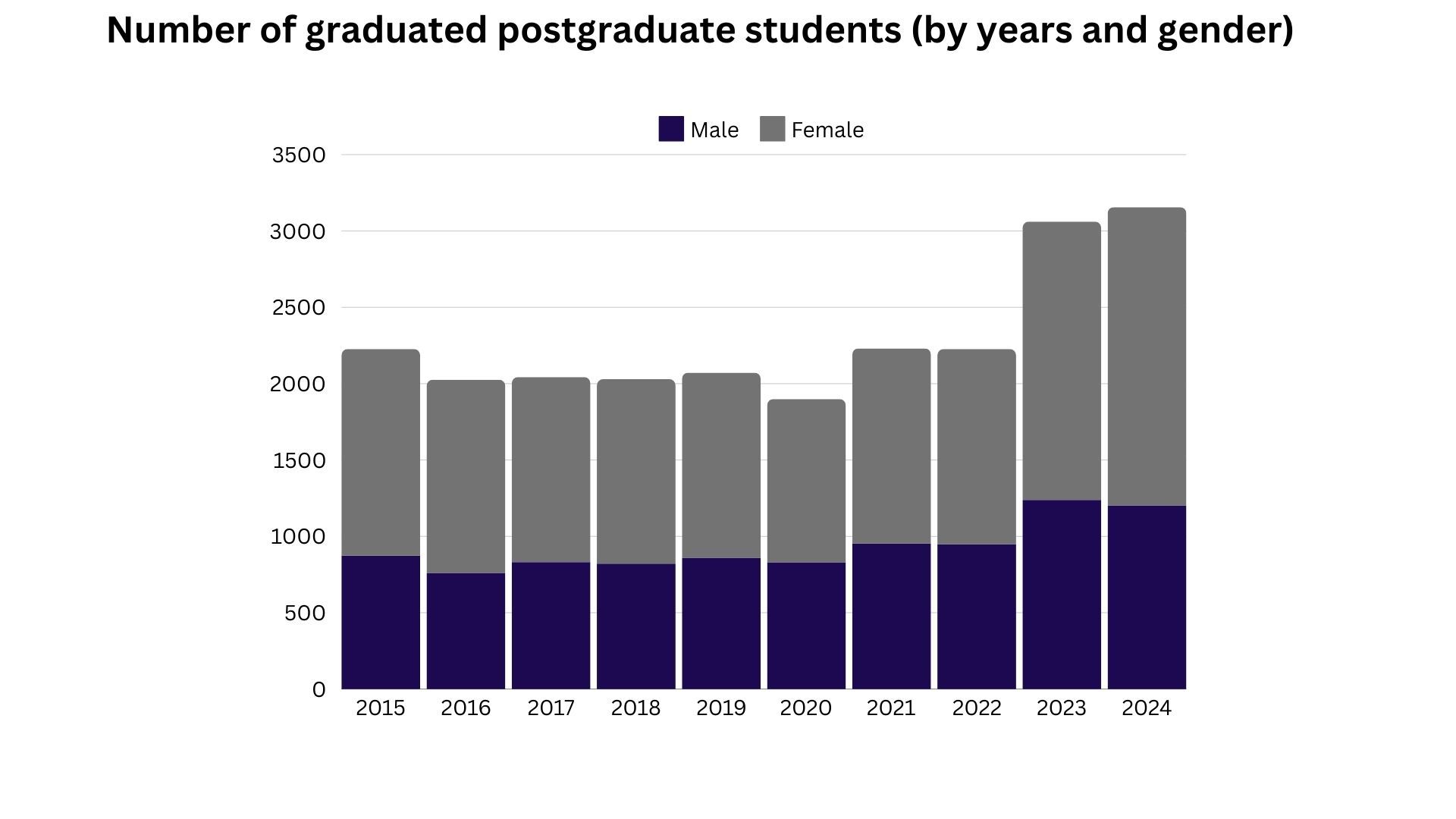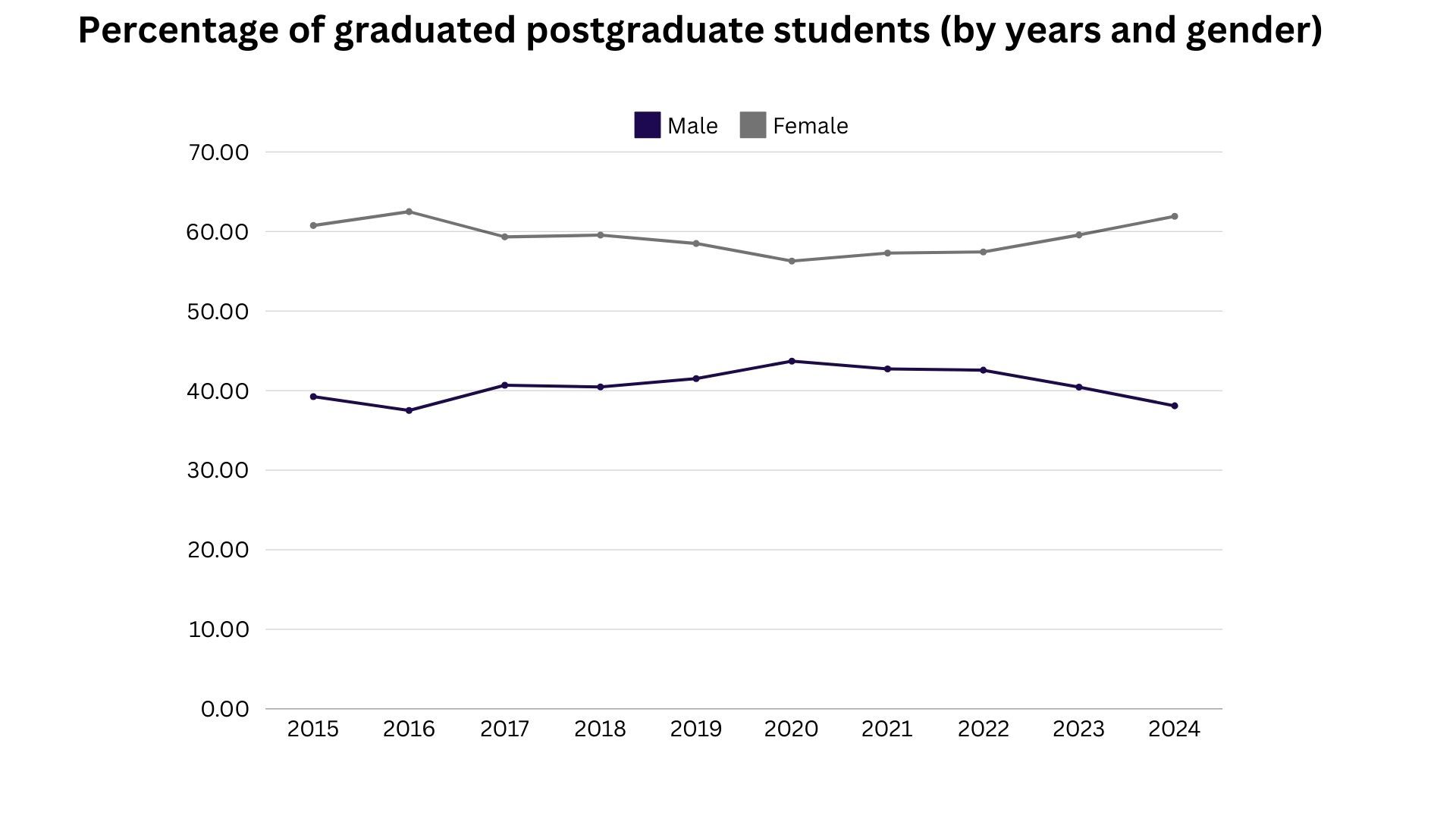E. Number and percentage of graduated postgraduate students

From 2015 to 2024, female postgraduate students have consistently outnumbered male students in terms of graduation rates. This consistent trend highlights the increasing participation and success of women in higher education, particularly at the postgraduate level.
In 2015, the number of female graduates was 1,353, significantly higher than the 874 male graduates. Over the years, while the number of male graduates fluctuated, the number of female graduates remained notably higher each year. For instance, in 2017, the difference narrowed slightly, with 1,212 female graduates compared to 831 males, but still, females maintained a leading position.
By 2024, the number of female postgraduates reached its peak at 1,954, which is substantially higher than the 1,202 male graduates for the same year. This growing trend reflects an increasing focus on female empowerment and education at advanced levels.

The data from the last ten years highlights a consistent pattern of higher graduation rates among female postgraduate students compared to their male counterparts. Starting from the earliest available data, females maintained a graduation rate of 60.75%, significantly surpassing the 39.25% graduation rate for males. This trend continued across the years, with female graduation rates remaining above 56% in all years, peaking at 62.49% in one of the years.
The smallest difference between female and male graduation rates occurred in the middle of the time frame, where the female graduation rate was 56.29%, while males had a rate of 43.71%, representing the closest the two groups came to parity. However, females still consistently held the advantage.
Towards the end of the period, the graduation rate for females climbed to 61.91%, whereas males saw a decrease to 38.09%, further widening the gap. This trend reinforces the notion that female students are increasingly dominating postgraduate education, both in terms of numbers and success rates.